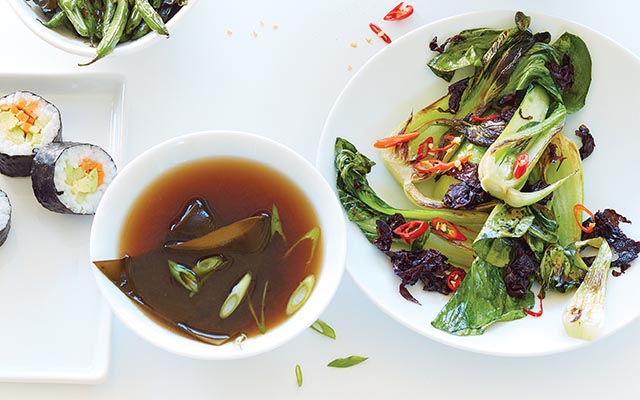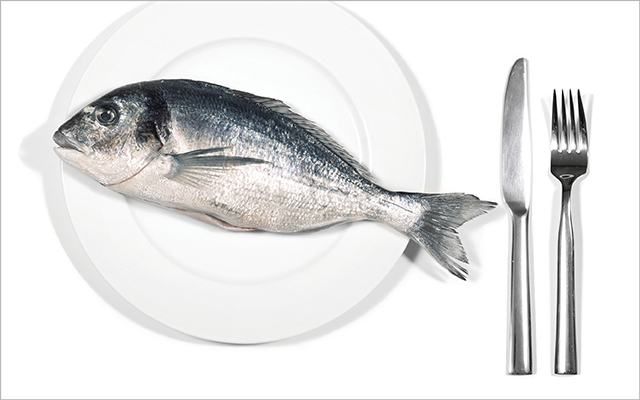Seaweed plays a vital role in marine habitats, filtering the oceans by absorbing heavy metals, carbon dioxide, and even radiation. A variety called hijiki is particularly good at sopping up arsenic, and many food-safety agencies around the world advise against consuming more than small amounts of it.
So how can you know you’re getting all of seaweed’s myriad benefits without the risk?
“You want your seaweed to come from a really clean body of water,” says Jane Teas, PhD, of the University of South Carolina’s Cancer Center. To feel confident about the purity of your seaweed, read packaging and websites, or even call seaweed farmers and harvesters and ask where they source their product and whether they test for pollutants. Harvester Cole Meeker says he keeps close track of the state of the water in which his seaweed grows; he even tests for radioactive isotopes.
Teas recommends avoiding seaweed imported from China, since the government does not consistently enforce food-safety regulations.
Try one of these five varieties fo seaweed:
Kombu
- Nutrient Power: A variety of kelp, kombu offers a wealth of minerals, including iodine, magnesium, potassium, folate, iron, and calcium. A 1/3-cup serving of kelp provides more iron than 3 1/2 cups of spinach.
- Cook It Up: Next time you make a savory soup, broth, or pot of beans, toss in a leaf of kombu — a giant among kelp with a rich, salty taste. Also, look for kombu noodles and other kelp noodles, which have a cooked texture similar to al dente pasta. Toss them with a peanut sauce or a variation on pad thai or try them with your favorite pasta sauce.
Arame
- Nutrient Power: Rich in potassium, researchers have found that arame possesses anti-obesity and antiviral properties.
- Cook It Up: This large sea vegetable is typically cut into long, thin strands for drying. It’s tender in texture and mild in flavor, with a hint of sweetness. Maderia suggests tossing it into a slaw with carrots, cabbage, ginger, and rice-wine vinegar.
Dulse
- Nutrient Power: This pinkish-red seaweed is an excellent source of minerals; a 1/3-cup serving of dulse has as much potassium as a large banana. It’s also rich in vitamins and antioxidants.
- Cook It Up: Eaten raw, dulse has an intense ocean flavor (try it with a rice-wine vinaigrette), though it mellows when it’s cooked. Dulse’s naturally occurring glutamates give it a bacon-like flavor when it’s fried. You can also sauté it with your favorite seasonal vegetables, such as carrots, broccoli, or bok choy.
Nori
- Nutrient Power: The ocean flavor of this familiar seaweed is mild. While it offers little in terms of protein or fat, nori does deliver on vitamins A and C, as well as potassium and magnesium.
- Cook It Up: Once harvested, nori is chopped, dried, and formed into thin sheets used for sushi and snacking. Try making your own sushi, or simply wrap nori paper around some sliced avocado, julienned cucumber, and grated carrot; drizzle with tamari and sesame oil. Nori flakes are also great sprinkled onto a salad and tossed with a mild vinaigrette.
Wakame
- Nutrient Power: Wakame is packed with calcium, as well as fucoxanthin, found to improve insulin resistance.
- Cook It Up: This seaweed has a deep-green hue, long and wide leaves, a salty–sweet flavor, and a soft texture. It’s great for seaweed salads or tossed with soba noodles. Chef Crystal June Maderia, author of The New Seaweed Cookbook, recommends sautéing wakame with green beans and topping it with tamari and sesame seeds.



This Post Has 0 Comments